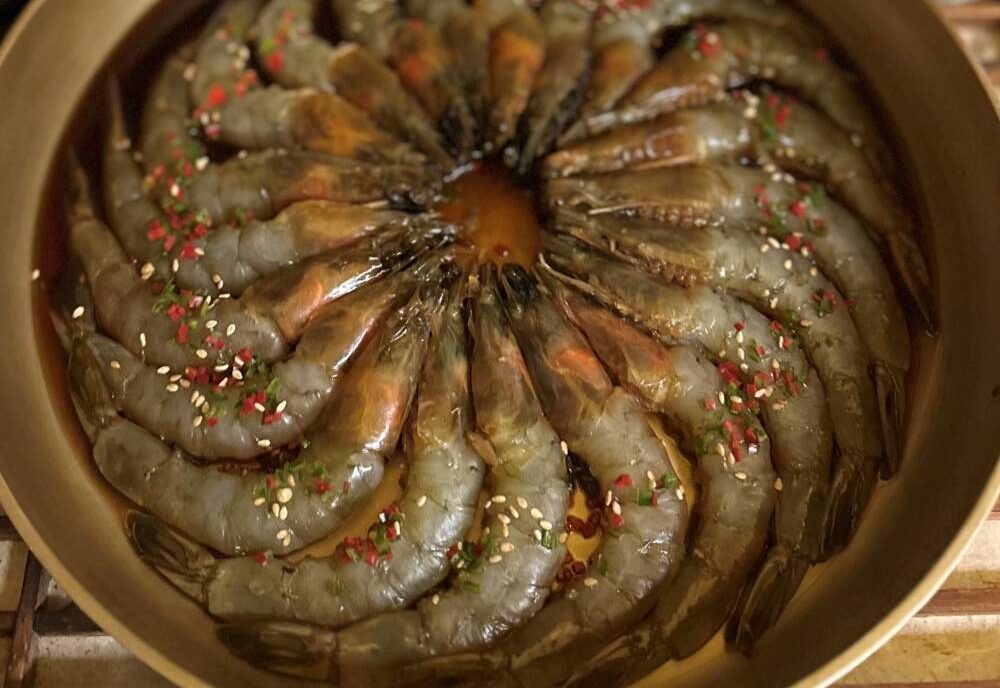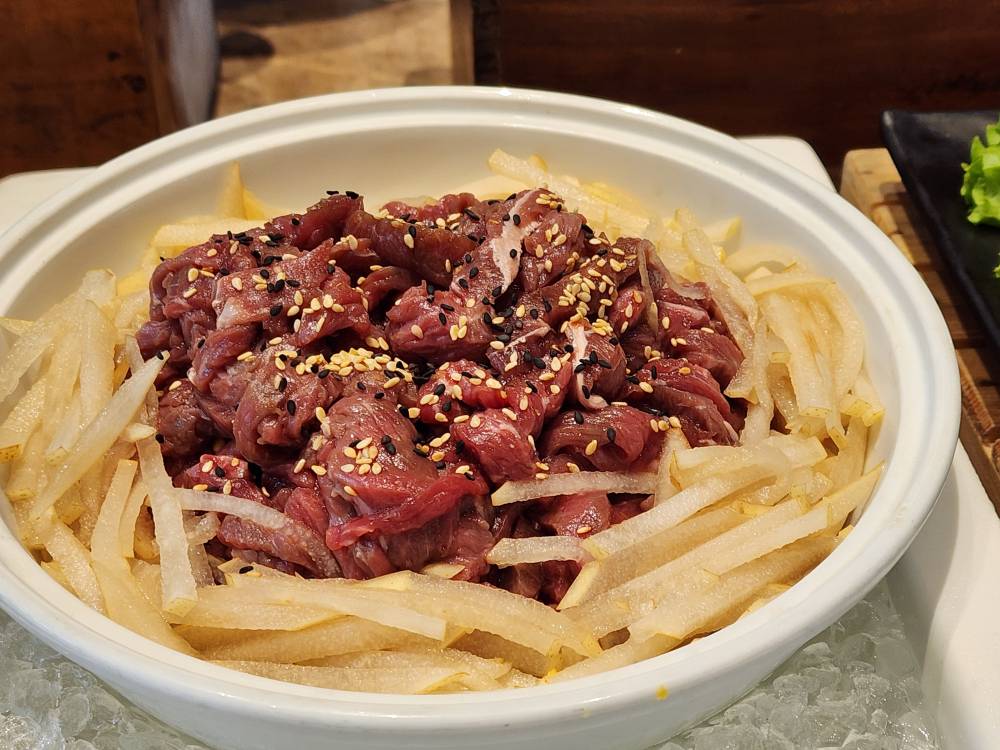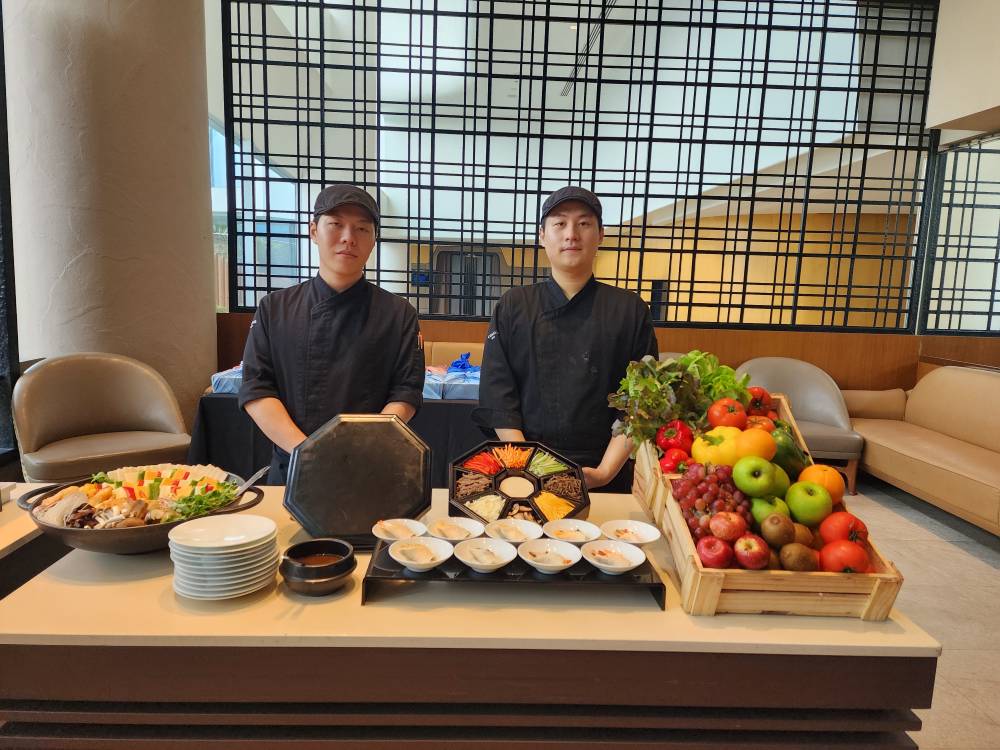Legendary Chef Series showcases Korean masters

Getting over the “ick” factor from eating raw food opens a world of new flavors. A good, fresh sashimi melts in the mouth, leaving the sweetness of the fish’s flavor, complemented by the saltiness of soy sauce and a kick of spice from the wasabi.
With a little more exploration, Korea’s offerings of raw food reveal themselves as well. Ganjang gejang or raw marinated crabs have gained popularity, thanks to one-minute videos on social media.
Raw crabs are marinated in soy sauce, garlic and ginger. They are supposed to be small enough to fit inside your mouth, allowing you to squeeze out all the meat when you take a bite. The dish can be prepared with just soy sauce or a spicy version, where gochugaru (Korean chili flakes) are added for heat.
The entire process of sucking the jelly-like crab meat out, feeling the crunch of the shell that you eventually spit out, and experiencing the spiciness that hits the nose, is addicting. The preparation process is easy to follow, and there are YouTube videos and recipes online. However, it’s best to leave it to experts, such as ahjummas (older women), because serving raw food can pose risks.
For this reason, the cold section of Conrad’s Brasserie on 3 should be the first destination of diners. While it doesn’t have the raw marinated crab, it offers something better.
“Ganjang sawoojang is similar to ganjang gejang, except that it uses shrimp instead of crab,” said chef Hwang Young-hun. Like the crab, the shrimp is marinated and fermented with soy sauce, garlic and ginger. It’s sweet, tender and the umami explodes in the mouth.

The shrimp can be eaten on its own or used as a topping for a bowl of rice. It’s also less messy to eat, allowing you to maintain your composure during a meal. Hygiene is another thing you don’t have to worry about since it’s prepared in a clean, controlled environment.
20 dishes
Hwang, along with fellow Conrad Seoul chef Lee Jun-mok, came to Manila as part of the Legendary Chefs Series at the hotel.
Hwang mentioned that they prepared at least 20 dishes for the series, which will be rotated throughout the week. They took the time to familiarize themselves with local ingredients to adjust and serve traditional and authentic Korean dishes.
Yukhoe or raw marinated beef is also part of the offering. It’s thinly sliced, seasoned beef that is similar to beef tartare. Yukhoe is one of Jeonju’s main ingredients in their bibimbap. Thus, pairing it with a small bowl of bibimbap at the hot station works well, too. Just don’t forget to ask for sesame oil and a side of ssamjang sauce.
Hwang balanced the menu by offering street food fare as well as dishes that could be served for kings. Gujeolpan, or a platter of nine delicacies, was typically served during the Joseon period. It’s arranged in an octagon dish and used as a filling for a small crepe-like wrap.

Hwang personally prepared this dish because he wanted a perfect presentation of the bite-sized treats. The filling includes vegetables, mushrooms, egg and beef. Another must-try at the buffet is the steamed fish and vegetables.
For dessert, kings favored yaksik or sticky rice with nuts and dried fruits, which is offered right next to hotteok, a pancake with cinnamon sugar filling that is a street food favorite.
Halo-halo has been temporarily replaced with patbingsu, where local red beans are used and mixed with ice and milk. More street food offerings include Korean-style fried chicken, gimbap, tteokbokki (spicy rice cakes and eomuk (fish cake). The buffet comes with one order of a soju-based cocktail.



















